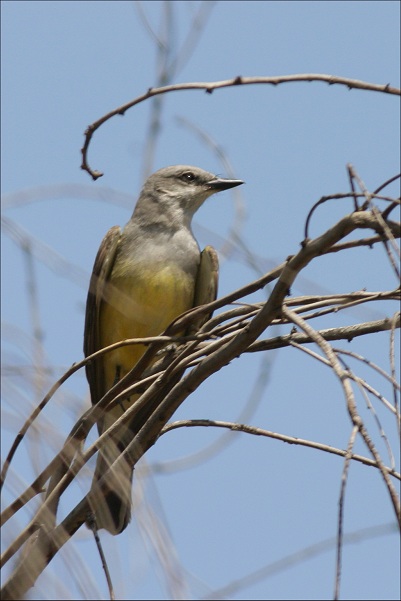
Date: 2004-04-25
Lens: Canon 400mm F5.6

 Western Kingbird
Tyrannus verticalis
Western Kingbird
Tyrannus verticalis
 Description
Description
The tumble-flight courtship display of the Western Kingbird is most impressive. Twisting and turning, the male flies up to 60 feet up, stalls, and then tumbles, flips, and twists as he falls toward the ground. During nesting, the Western Kingbird will actively defend its young against larger birds, such as Crows.
Like other flycatchers, this bird catches insects in mid-air, often persuing its prey for up to 40 feet and 20-40 feet above the ground. Feeds on aerial insects, such as bees, wasps, butterflies and moths; occasionally eats berries.
Olive-brown upperparts. Gray head with thin, weak eyeline. Gray hind-neck and back. Pale gray throat and upper breast. Pale yellow lower breast to undertail coverts. Dark, unforked tail with white outer feathers. Large, black bill. Has a thin, red crown that is only rarely seen during courtship. 8 to 9 inches in length.
Open areas. Grasslands, riparian woodlands, and farms.
 Nesting
Nesting4 creamy-white eggs. The eggs have a 18-19 day incubation period. Fledging occurs in 16-17 days. The nest is made from sticks and lined with plant fiber. It is usually built in a tree or bush.